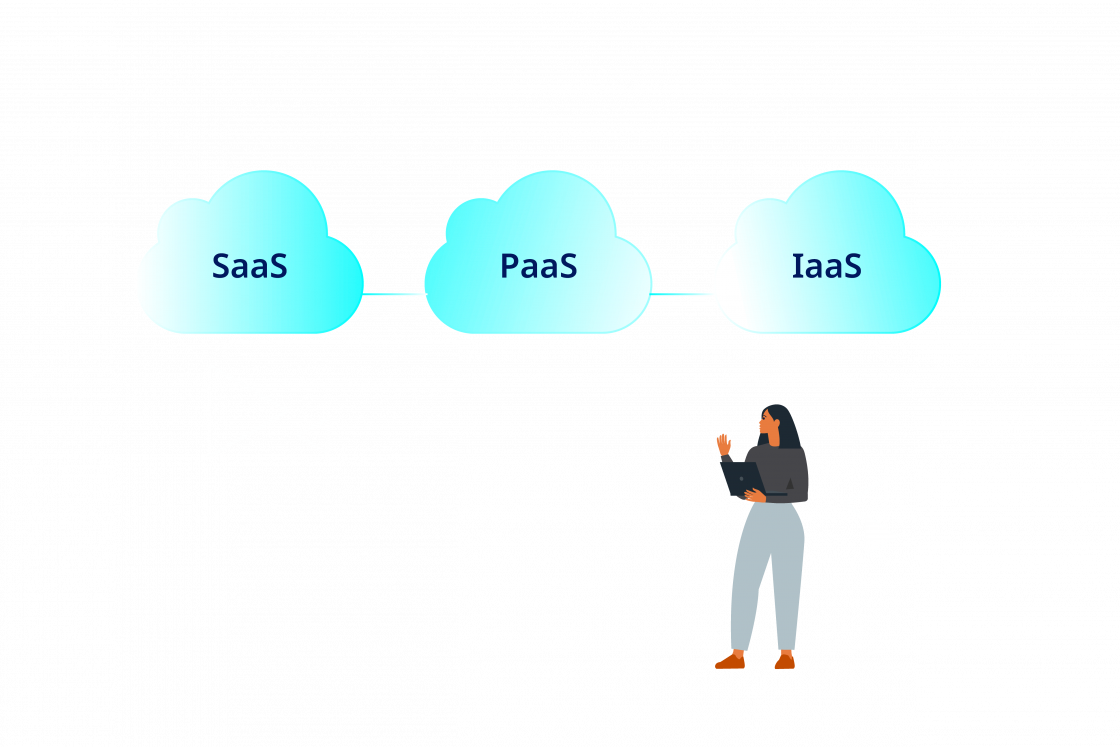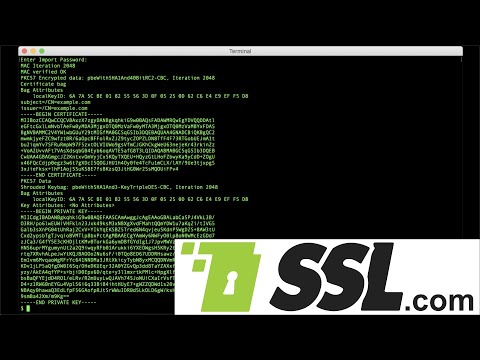
FTP, or File Transfer Protocol, is a protocol which allows clients to download files from a server and upload them. SSL encryption secures data transfers from a client to a server. FTPS has some security advantages over other file transfer protocols like HTTPS and SFTP.
The FTPS provides:
The client and the server create a ftps link on the port specified by either the client or server (depending whether the connection is in implicit or explicit mode). The ftps connection establishes TLS to create an asymmetrical encryption session.
FTPS server authenticates clients with certificates in a similar way to HTTPS. Certificates can be signed by a trusted CA such as Verisign or they can be self-signed. They are stored in the trust key storage of the FTPS Server.
If the certificate of the server is not trusted, then the client will be prevented from connecting. A man-in the-middle (MIM) attack can be avoided.

The ftps service also requires the server to provide a public key certificate, which can be obtained using tools such as OpenSSL. This is a great idea, as it allows the client to trust the identity of the server.
The ftps server will be unable to verify the identity of the certificate if it is not signed. It will display a warning saying that it cannot verify the certificate. You can contact the server for more information, and resolve the issue.
A feature of FTPS that is often overlooked is its ability to establish a series of control and information channels. These are used to transfer file listings and directories between the server client. These data-channels can be configured for on-demand temporary port listening on either the client or the server in passive mode, and are closed at the end of an FTP.
When choosing FTPS software you should consider the type of data channel that will be required to handle concurrent file transfers and directory listings, as well as the number of data channels per user. This will help you reduce the attack surface when connecting to larger networks.
To provide multiple options for communication security, FTPS servers need to support a variety of cipher suites. This is particularly important when securing connections across firewalls.

For example, in some cases it may be necessary to disable TLS encryption when transferring nonconfidential files. It is common for users to want to rename or move files uploaded in a non-secure way.
There are a variety of command channels available to send and receive commands. These include LIST, STOR, and RETR, which are used to get a directory list on a server. They can also be used for renaming, moving, or deleting files, as well as downloading files onto the client. This is a great feature for users who have many connections and need to be able to work in a distributed environment with the same file server.
FAQ
How much do web developers make?
Working on a website yourself will likely earn you between $60 and $80 an hour. You can charge more if you're an independent contractor. It is possible to charge between $150-200 an hour.
What types of websites should you make?
This question is dependent on your goals. If you are looking to build a business from your website, it may be beneficial to focus on selling online products. To do this, you will need to create a strong eCommerce website.
Blogs, portfolios, forums, and other types of websites are also popular. Each requires different skills. If you are looking to start a blog, then you need to know about blogging platforms like WordPress and Blogger.
It is important to choose the right platform for your site. There are lots of free themes and templates available for each platform.
After you have chosen a platform, it is time to add content. Your pages can be filled with images, videos and text.
Your new website is ready to be published online. Visitors can view your site online once it has been published.
What Should I Include In My Portfolio?
These are the things you should include in your portfolio:
-
Examples of your previous work.
-
Link to your website (if possible).
-
You can also find links to your blog.
-
Links to social media profiles
-
Other designers' online portfolios can be found here.
-
Any awards you've been awarded.
-
References.
-
Take samples of your work.
-
Links showing how you communicate with clients.
-
Links showing you're willing to learn new technologies.
-
These are links that show your flexibility
-
You can find links that reflect your personality.
-
Videos showing your skills.
Should I hire a web designer or do it myself?
Don't pay for web design services if you want to save money. Hiring someone else to make your website is a good option if you're looking for quality results.
It is possible to create websites without hiring expensive professionals.
If you're willing put in the work, you can create a website that looks great using tools like Dreamweaver.
You might also consider outsourcing your project to an experienced freelance web developer who charges by the hour instead of per-project.
How To Create A Static Website
There are two options available to you when building your first static website.
-
Content Management System (a.k.a. WordPress: This software can be downloaded and installed on your computer. This will allow you to create an essential website.
-
Create a static HTML website: You'll need to code your HTML/CSS code. If you already know HTML, it is simple to do.
You might consider hiring an expert to design your website if you are planning to build a large site.
Start by choosing option 2.
How Do I Choose A Domain Name?
It is important that you choose a domain name that is memorable. It is essential to have a unique domain name. People will not be able find you when they search your product.
Your domain name should be concise, memorable, unique, relevant, and easy to remember. It is ideal to have something that people can type into their browser.
These are some suggestions for choosing a domain.
* Use keywords that relate to your niche.
* Avoid using hyphens (-), numbers and symbols.
* Don't use.net or.org domains.
* Use words that are already used.
* Avoid generic terms like domain or website.
* Check it's always available.
Statistics
- When choosing your website color scheme, a general rule is to limit yourself to three shades: one primary color (60% of the mix), one secondary color (30%), and one accent color (10%). (wix.com)
- Is your web design optimized for mobile? Over 50% of internet users browse websites using a mobile device. (wix.com)
- It's estimated that chatbots could reduce this by 30%. Gone are the days when chatbots were mere gimmicks – now, they're becoming ever more essential to customer-facing services. (websitebuilderexpert.com)
- In fact, according to Color Matters, a signature color can boost brand recognition by 80%. There's a lot of psychology behind people's perception of color, so it's important to understand how it's used with your industry. (websitebuilderexpert.com)
- Did you know videos can boost organic search traffic to your website by 157%? (wix.com)
External Links
How To
What is website hosting?
Website hosting is the location where people go when they visit websites. There are two types.
-
The cheapest option is shared hosting. Your website files are stored on a server that is owned by another person. Customers who visit your website send their requests via the Internet over to that server. The server owner then forwards the request to you.
-
Dedicated hosting is the most expensive option. Your website resides entirely on one server. There are no other websites sharing space on the server. Your traffic remains private.
Most businesses choose shared hosting because it's less expensive than dedicated hosting. The company hosting the server will provide the resources necessary to manage your website.
However, both have their advantages and disadvantages. These are the key differences between them.
Shared Hosting Pros:
-
Lower Cost
-
Easy to Setup
-
Frequent Updates
-
It is possible to find it on many web hosting companies
Hosting shared with others can cost as low as $10/month. But keep in mind that this price usually includes bandwidth. Bandwidth is how much data you can transfer to the Internet. So even if you only upload photos to your blog, you may still pay extra money for high amounts of data transferred through your account.
You will quickly see why you paid so much for your former host once you have started. Many shared hosts offer very little customer support. Their techs will occasionally walk you through setting up your site, but you're on your own after that.
A provider with 24-hour telephone support is a good choice. They will assist you with any problems that may arise while you're sleeping.
Hosting dedicated:
-
More Expensive
-
Less common
-
Specific Skills Required
With dedicated hosting, everything you need for your website is at your fingertips. You won't have to worry about whether you're using enough bandwidth or whether you've got enough RAM (random access memory).
This means that you will have to pay a little more upfront. However, once your business goes online, you'll discover that you don’t need as much technical support. You'll be able to manage your servers effectively.
Which Is Better For My Business, So Which Is Better?
This depends on the kind of website that you want. If you only want to sell products, then shared hosting might be the best choice. It's easy to set up and maintain. You'll probably receive frequent updates because you are sharing a server hosting many other sites.
However, dedicated hosting is the way to go if you want to build a community around your brand. You can put your efforts into building your brand, and not worry about how to handle your traffic.
Bluehost.com is a web host that offers both. Bluehost.com offers unlimited monthly data transfers, 24/7 customer support, domain registrations free of charge, and a 30-day guarantee for your money back.